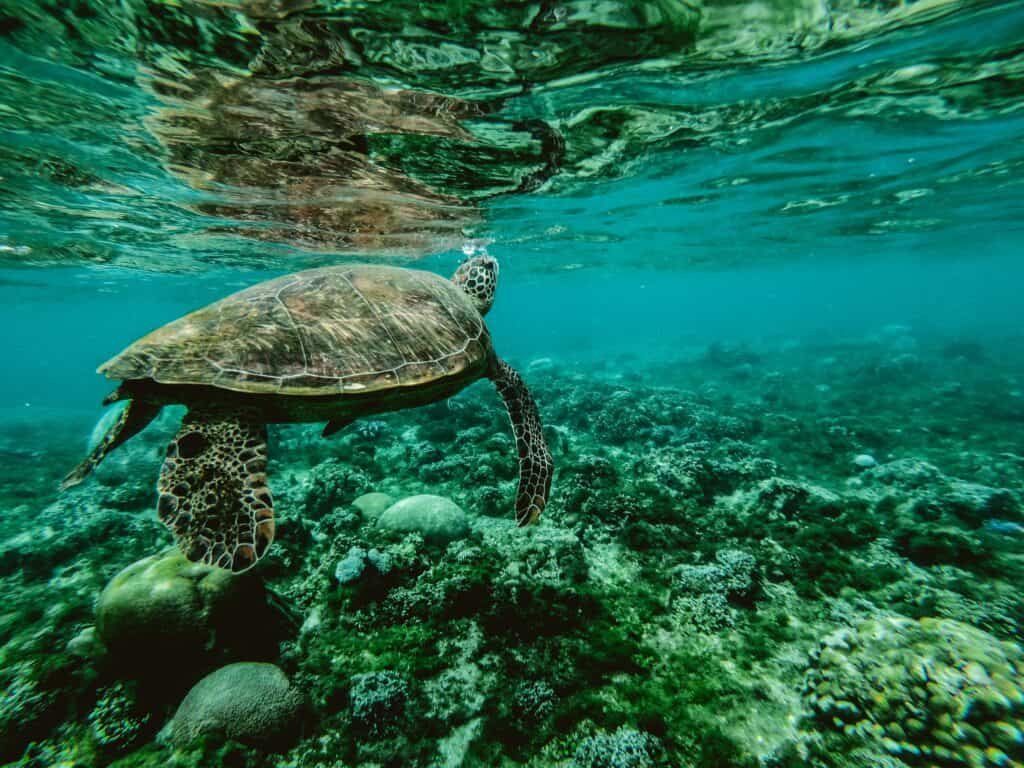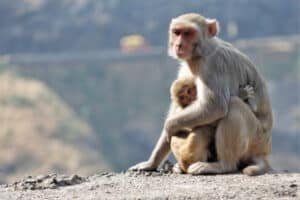Turtles are hard-shelled reptiles that live on land and in the sea in many regions of the world. They are members of the Testudines order. They typically live in solitary, coming out from their shells when hungry and retreating when threatened.
These activities keep turtles alive for the rest of their lives. There are 360 species of turtles, including both extant and recently extinct land tortoises and freshwater terrapins.
Because of this protection system, it’s worth wondering, “What predators eat turtles?” Turtles have a hard shell that is primarily formed from their ribs. Unfortunately, this does not work against all predators. Some creatures are quite capable of hunting them and they are frequently eaten up by a variety of predators.
Most sea turtles leave their eggs to hatch after laying them on shore. The hatchlings must crawl back into the water by their own effort and risk. They are quite vulnerable during this period and can be devoured by predators.
Table of Contents
Habitat and Distribution
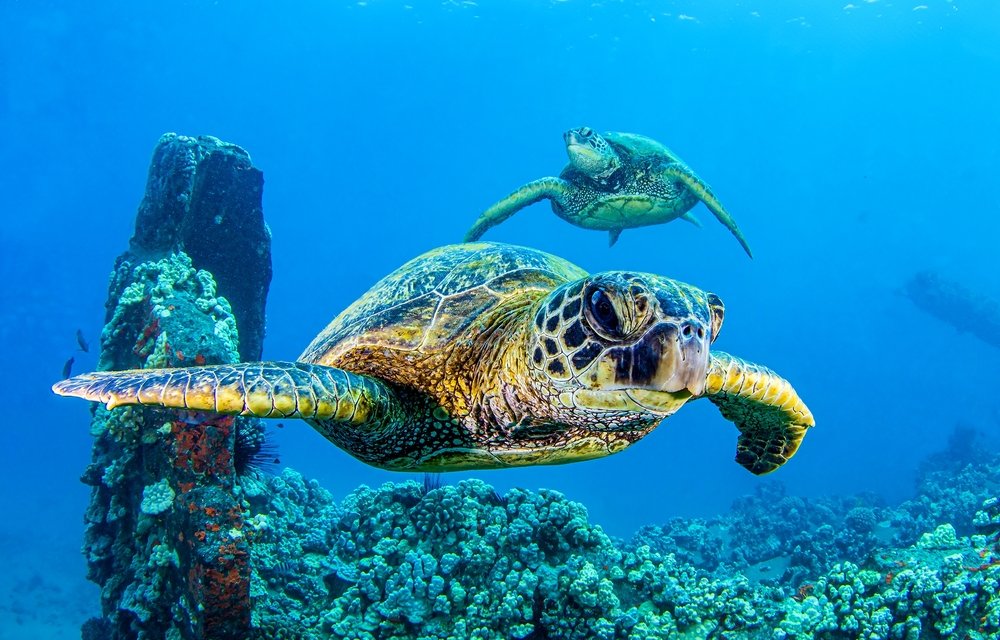
Turtles are traditionally widespread throughout South Asia and the southeastern sections of North America. Although some turtles live on land, there are many more aquatic species. There are several turtle species as well as multiple tortoise varieties. You could be looking at any of the 360 species of turtles depending on their size, color, or location.
Turtles can be found on every continent, ocean, and island, with species ranging from terrestrial to totally aquatic to semi-aquatic. Sea turtles are generally found in the tropics and subtropics; however leatherback turtles distributed through the cooler Pacific and Atlantic oceans. Pleurodira can be found only in freshwater and in the Southern Hemisphere. Cryptodira encompasses a diverse spectrum of terrestrial, freshwater, and marine species.
The Amazon river, the Gulf Mexico drainages of the United States, and sections of South and Southeast Asia are the global regions with the most non-marine turtle species.
Turtle distribution in colder areas is constrained by reproduction restrictions, which are exacerbated by extended hibernations. North American species are only found north of Canada. Some turtles can also be found at high elevations; for example, the species Terrapene ornata can be found in New Mexico at elevations of up to 2,000 meters.
The leatherback sea turtle, on the other hand, may dive to depths of up to 1,200 meters. Gopherus species can meet temperature extremes from lowest of -40 °C to as highest as 40 °C; however they are most active between 26 and 34 °C.
What Predators Eat Turtles? Predators of Turtles
Various species of birds, sharks, snakes, dogs, raccoons, snapping turtles, killer whales, and fishes devour turtles. Before they can consume turtle meat, predators must usually discover a technique to shatter its strong and hard shell.
Larger turtles typically have a better chance of survival in the wild than newborn turtles. However, not all turtles particularly sea turtles can tuck their entire bodies in. Any vulnerable organ of the body can expose them to assaults.
Let’s take a look at each of the turtle predators one by one.
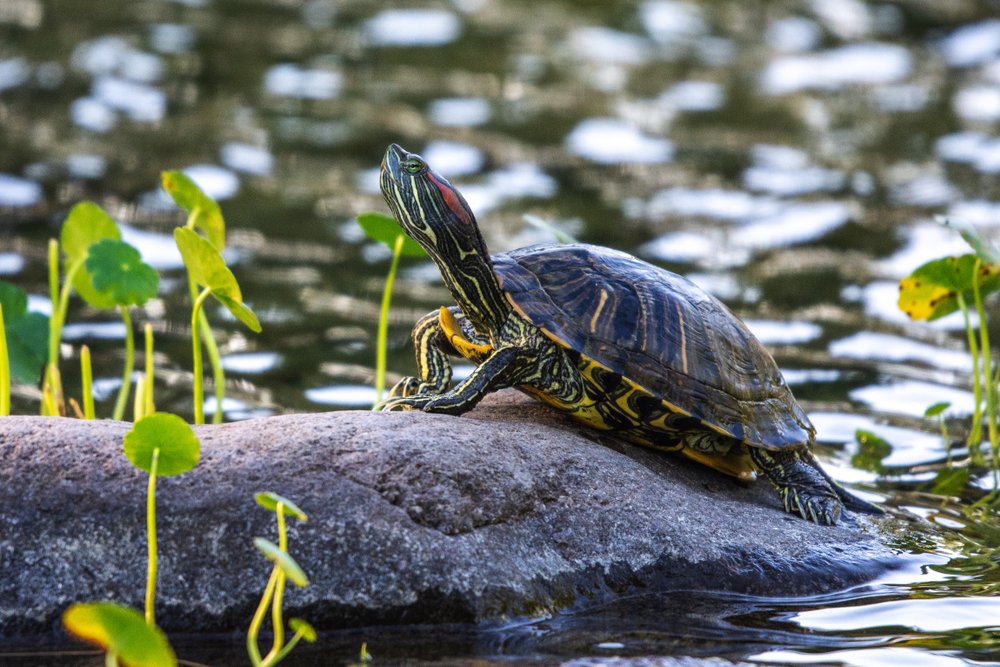
1. Carnivorous and omnivorous Birds
When turtle eggs hatch, the hatchlings heed their innate instincts and dive into the water. They are, however, often delicate and slow. While racing into the water, these newborn turtles are preyed upon by gulls and other birds on the beach.
Bearded vultures catch turtles and soar high above the ground, usually over rocky ground or onto large rocks or boulders, to release the reptile over them. If the turtle’s shell does not shatter after the initial assault, the vultures may try again. The bearded vulture then feasts on the turtle’s flesh, which is now readily available.
Crows hunt on the western swamp turtle of Australia, as do other carnivorous birds such as ravens and herons. Seagulls catch and eat hatchling turtles as they attempt to make their way to the relative safety of the ocean after hatching on the beach.
On the other hand, enormous birds of prey like hawks, eagles, and others target medium and large-sized turtles that swim near the surface. They swoop in and lift the turtle into the air before dropping it to the ground. The bird can consume the flesh after the collision cracks or shatters the turtle’s shell.
2. Species of Sharks
Sharks hunt fish, crabs, birds, and other sharks. It’s no surprise that turtles are on the menu. Sharks can easily grab the turtle’s flipper and shred it apart, depending on its size. Tiger sharks have been observed hunting turtles at sea. Their strategy is to assault the prey from beneath. They may easily access the turtle’s fleshy portions in this manner. Furthermore, tiger sharks have evolved and developed teeth capable of piercing shells over time.
The great white shark, which can kill a person with a single bite, regularly includes sea turtles in its diet of fish and marine animals. This massive shark frequently charges its victim from beneath. The great white effectively plow into the turtle with its jaws open, leaving the sea reptile no way to escape.
3. Amphibians and reptiles
In the absence of more suitable prey, some mature frogs attempt to devour small freshwater turtles. Turtle eggs and hatchlings are eaten by the Nile monitor, whereas adult turtles are eaten by crocodiles and alligators. Mature alligators can weigh up to 230 kilograms and can readily kill mature turtles.
4. Giant lizards
Hatchlings and juvenile turtles are easy prey for giant lizards. Most carnivorous lizards, in fact, like eating turtle eggs. Crocodiles, on the other hand, have a powerful jaw and can break through turtle shells to consume them. As a result, small freshwater turtles are frequently preyed upon by crocodiles and other reptiles. Monitor lizards have also been observed hunting flat-back turtle nests for hatchlings and feasting on them.
5. Snakes
A snake would normally eat turtle eggs rather than a grown turtle’s hard shell. Because they lack teeth, swallowing a turtle with its tough exterior would be difficult. And digesting it would be several times more difficult. As a result, most snakes eat turtle eggs and spit out the eggshell. They also have a good sense of smell and can consume turtle eggs even while the mother is present.
Giant snakes, such as anacondas and kingsnakes, are known to consume mature turtles. Anacondas have teeth, strong grips, and flexible jaws, allowing them to constrict and swallow their prey whole. Adult turtles can thus become prey to such snakes easily.
6. Foxes and Dogs
Dogs and foxes frequently go in search of newly placed turtle eggs. Sea turtles frequently leave their eggs on land before returning to the water. The eggs are simply protected by a layer of sand. Unfortunately, dogs and foxes dig up turtle nests to consume turtle eggs and juvenile turtles. Because the hatchlings have soft shells, dogs and foxes may easily make a nice meal out of them.
7. Raccoons and Opossums
Raccoons are prominent predators of turtles, particularly pet turtles. They enjoy snatching eggs and can even take smaller turtles. They generally relocate their meals to areas where they may eat them quietly. Raccoons can detect nests and have a fantastic time because nests often contain a big number of eggs.
Opossums are another common opportunistic omnivore that eats juvenile turtles and turtle eggs. Because opossums get the majority of their protein from insects and invertebrates, these encounters are usually based on chance.
8. Crabs
Ghost and surf crabs are always on the lookout for newborn turtles. They have pincers that they use to catch juvenile turtles and drag them into their holes. Ghost crabs will occasionally dig into nests and devour the eggs. Hatchlings washed up on the beach are frequently eaten by vigilant ghost crabs.
9. Killer whales
Leatherback turtles have softer shells than other turtles. Because of their size, they are less vulnerable to most predators. Killer whales (orca) have been known to consume these turtles. Most sea turtles are unable to retract their heads within their shells. As a result, they are vulnerable to killer whales and other predators.
10. Mustelids
All mammals in the Mustelid family, including skunks, weasels, fishers, otters, mink, badgers, and others, are capable of and willing to eat turtle eggs. There’s also little doubt that they have the jaw strength required to crack apart a hatchling turtle’s shell!
Other significant threats
The biggest threat to turtles is from anthropogenic activities
Illegal trade and overharvesting

Sea turtles are still being collected in an unsustainable manner, both for turtle meat and for the trading of their parts. Many people around the world rely on turtle meat and eggs for sustenance and revenue. Some people also slaughter turtles for medicinal and religious purposes.
Over Ten millions of turtles are murdered in this manner each year, decimating already endangered green and hawksbill turtle populations.
Turtles are still being butchered for both home and international markets. Under the Convention on International Trade in Endangered Species of Wild Fauna and Flora (CITES), all sea turtle species and their parts are forbidden from international trade. This is a global agreement among nations to control or prohibit international trade in threatened species. Illegal trafficking remains an issue.
Loss of habitat
Sea turtles lay their eggs on beaches. Uncontrolled coastal development, beach car traffic, and other human activities have destroyed or interrupted sea turtle breeding beaches worldwide. Lights from roads and buildings, for example, confuse hatchlings and steer them away from the water, while vehicle traffic on beaches makes the sand too hard for female turtles to dig nests.
Onshore activities such as land clearing and agricultural nutrient run-off damage and destroy turtle feeding areas such as coral reefs and seagrass beds. Beach rehabilitation works, such as dredging and sand filling, have also been proved to be detrimental to beachfront buildings.
Environmental Pollutions
Sea turtles may confuse floating plastic objects for jellyfish when attempting to eat them and suffocate as a result. These interactions typically end in death. Ghost gear is lost or abandoned fishing equipment that entangles sea turtles and can kill them by drowning or render them incapable of feeding or swimming.
Hatchlings can become entangled in trash on beaches, preventing them from swimming to the ocean. Marine turtles of all ages perish in oil spills.
Accidently catch in fish catching objects
Each year, long line hooks, fishing gill nets, and shrimp trawl nets catch thousands of marine turtles. When they are caught in nets intended for other species, they are considered bycatch in fisheries. Since sea turtles must surface to survive, many of them die when caught.
Accidental fishing gear capture is the biggest hazard to the majority of sea turtle species, especially the endangered loggerhead, green, and leatherback turtle species. This threat grows as fishing activity does.
Climate change
The sex of the progeny is affected by environmental factors like temperature at all phases of a turtle’s life. Less male hatchlings are produced when temperatures are exceptionally warm as a result of climate change. While more brutal storms and rising sea level may harm crucial nesting sites and disturb eggs, rising sea temperatures may also result in the loss of important sea turtle feeding locations.
Why we need to conserve sea turtles?
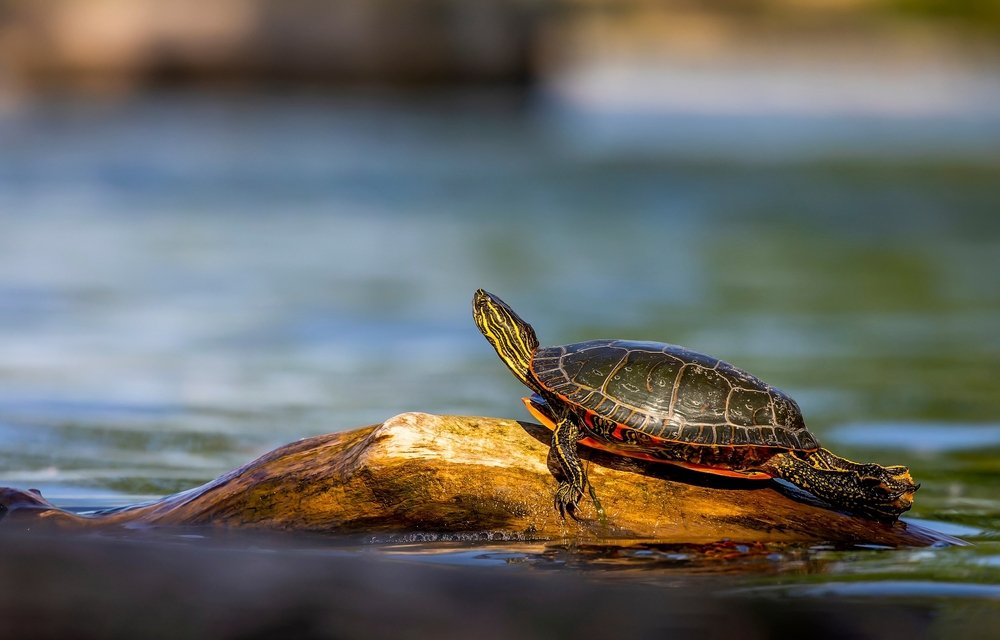
According to the world wildlife fund (WWF), Sea turtles are an essential component of marine ecosystems. They support the physical condition of coral reefs and seagrass beds, which aids economically important species including lobster, tuna, and shrimp. The living ancestors of a group of reptiles that have inhabited our oceans for the past 100 million years are sea turtles. Turtles are valuable in terms of tourism and culture.
Worldwide, five of the seven species are present, mostly in tropical and subtropical parts of oceans. The remaining two species, however, have much smaller geographic ranges: the flatback turtle is mostly found in northern Australia and southern Papua New Guinea, while the Kemp’s ridley is only found in the Gulf Mexico.
How to conserve turtles
Turtles have the capability to thrive in their natural habitat; but, habitat degradation, pollution, and the disposal of plastic in water bodies and oceans can be harmful to their health. To save turtle species, there is a great need for recycling and decreased plastic manufacture, as well as proper waste management.
On the other hand, ongoing study is required to provide up-to-date information on how climate change, pollution, illegal trading and hunting, habitat destruction, accidental bycatch, or diseases and pests affect the turtle population and health.
Read Also: What Animals Eat Monkeys

